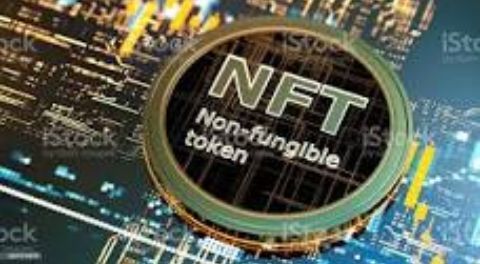Planning and producing an NFT photo is a fun and creative process that provides artists the ability to express their unique vision, experiment with new tools and methods, and be acknowledged and compensated for their work, Entrepreneurng Report.
The following are the steps for making an NFT image:
Read Also: The Background, Overview, and Benefits of NFTs
1. Set your creative vision
Before you begin designing your NFT image, consider this. What do you want NFT’s logo to represent? What kind of atmosphere or tone are you aiming for? According to nft now, creating an NFT aids artists in concentrating on creating work that more closely resembles their creative vision.
2 Select the proper digital tools
Use software that enables you to create excellent, unique artwork and is compatible with the blockchain platform you wish to use.
3. Create a design sketch
Start by creating a paper or digital drawing of your concept. This will enable you to see your NFT photo and make any required changes before beginning the final design.
4. Make your NFT image
By using digital tools of your choice to create your NFT image. Think about utilizing brilliant colors, minute details, and unique designs to make your NFT picture stand out.
5. Add uniqueness and scarcity
To make your NFT image more rare and distinctive, think about using techniques like layering, motion, or creating limited edition NFT photos.
6. Observe the technical specifications
Make sure your NFT photo complies with the technical requirements of the blockchain platform you wish to use and can be traded there.
Read Also: Meme Coins Are On The Rise, But Which Is Better: DOGE OR TOADS?
Different NFT Types and Their Applications
Non-fungible tokens (NFTs) have a wide range of uses in the digital world and can take many different forms. Here are a few illustrations:
1. NFTs that represent digital artworks like paintings, graphics, and pictures are known as art NFTs, and they are the most common type of NFT.
2. NFTs for music: these NFTs for music represent various digital music assets, such as songs, albums, and soundtracks. They provide musicians and artists with a means of selling their creations as distinctive goods that may appeal to both collectors and listeners.
3. Gaming NFTs – These NFTs are used in the gaming industry to represent ownership of in-game items like characters, weapons, and skins. They allow gamers to buy, sell, and exchange uncommon products, creating a new market for gaming enthusiasts.
4. Collectible NFTs – NFTs for special digital treasures like trading cards, virtual animals, and even tweets are known as collectible NFTs. They provide collectors with a way to obtain valuable, uncommon digital items that will last a lifetime.
5. NFTs for domain names — These NFTs on the blockchain represent ownership of domain names. For buying, selling, and transferring domain names—valuable assets in the online world—they provide a secure, decentralized method.
Conclusion
For both artists and collectors, creating and selling NFT images may be an exciting and lucrative opportunity. By following the best practices outlined in this article, such as choosing the suitable digital art medium, designing your NFT picture for maximum impact, and promoting your work for maximum visibility, you may build a strong brand and reputation as an NFT artist.
It’s also crucial to keep up with the most recent developments and technologies while keeping ethical concerns in mind if one wants to ensure that the NFT industry grows and thrives sustainably and ethically.











